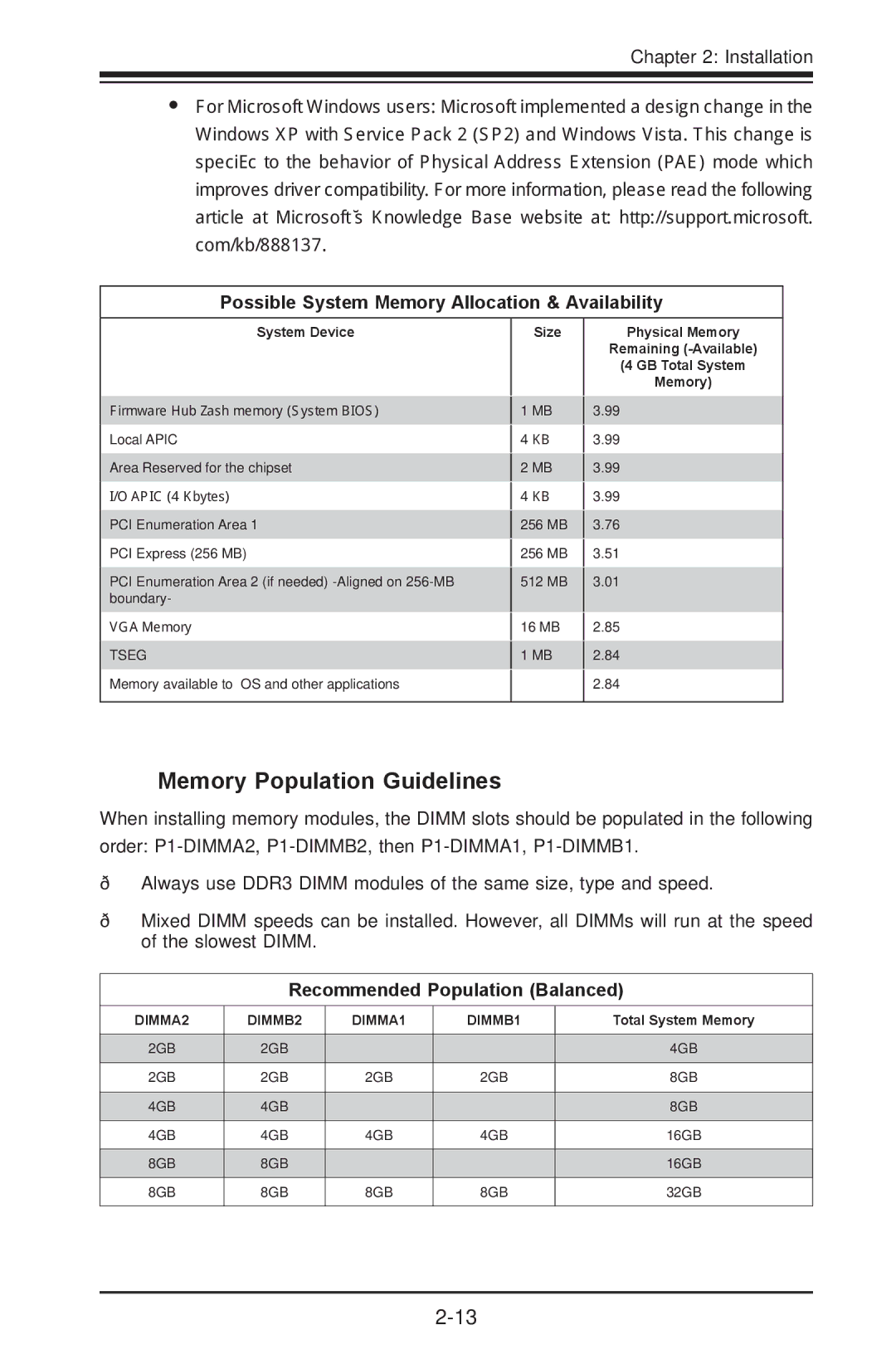
Chapter 2: Installation
•For Microsoft Windows users: Microsoft implemented a design change in the Windows XP with Service Pack 2 (SP2) and Windows Vista. This change is specific to the behavior of Physical Address Extension (PAE) mode which improves driver compatibility. For more information, please read the following article at Microsoft’s Knowledge Base website at: http://support.microsoft. com/kb/888137.
Possible System Memory Allocation & Availability
System Device
Size
Physical Memory
Remaining
(4 GB Total System
Memory)
Firmware Hub flash memory (System BIOS) Local APIC
Area Reserved for the chipset
I/O APIC (4 Kbytes)
PCI Enumeration Area 1
PCI Express (256 MB)
PCI Enumeration Area 2 (if needed)
VGA Memory
TSEG
Memory available to OS and other applications
1 MB | 3.99 |
4 KB |
|
3.99 | |
2 MB |
|
3.99 | |
4 KB |
|
3.99 | |
256 MB |
|
3.76 | |
256 MB |
|
3.51 | |
512 MB |
|
3.01 | |
16 MB |
|
2.85 | |
1 MB |
|
2.84 | |
|
|
| 2.84 |
|
|
Memory Population Guidelines
When installing memory modules, the DIMM slots should be populated in the following order:
•Always use DDR3 DIMM modules of the same size, type and speed.
•Mixed DIMM speeds can be installed. However, all DIMMs will run at the speed of the slowest DIMM.
Recommended Population (Balanced)
DIMMA2 | DIMMB2 | DIMMA1 | DIMMB1 | Total System Memory |
|
|
|
|
|
2GB | 2GB |
|
| 4GB |
|
|
|
|
|
2GB | 2GB | 2GB | 2GB | 8GB |
|
|
|
|
|
4GB | 4GB |
|
| 8GB |
|
|
|
|
|
4GB | 4GB | 4GB | 4GB | 16GB |
|
|
|
|
|
8GB | 8GB |
|
| 16GB |
|
|
|
|
|
8GB | 8GB | 8GB | 8GB | 32GB |
|
|
|
|
|
